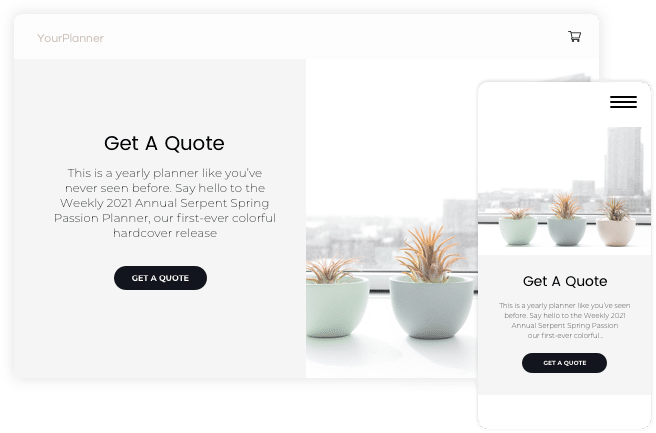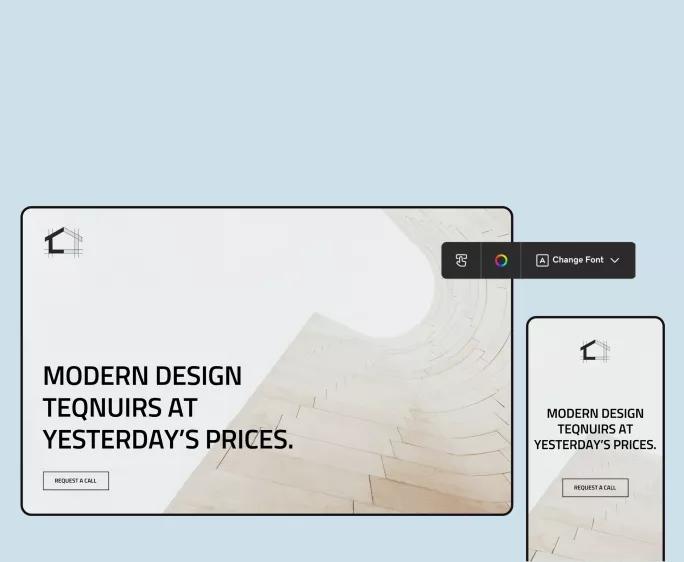Improve Customer Experience with Cutting-Edge Website Design Company Solutions
Improve Customer Experience with Cutting-Edge Website Design Company Solutions
Blog Article
Check Out the Different Types of Web Design Services for Your Unique Needs
From receptive web design that adapts to various tools, to e-commerce internet style that drives on-line sales, to user experience (UX) style that improves consumer complete satisfaction, to custom-made internet design that brings your vision to life-- the possibilities are limitless. Whether you're a tiny business owner looking to establish an on the internet visibility or a business owner intending to revolutionize the mobile app world, this discussion will certainly drop light on the various kinds of internet layout services available, helping you make an educated decision that lines up with your goals.
Receptive Internet Style
Receptive website design is a crucial facet of modern web development that ensures sites adapt and display perfectly across different tools and screen sizes. With the increasing use of smartphones, tablet computers, and various other mobile tools, it has actually come to be crucial for internet sites to be straightforward and easily accessible on any type of screen.
Responsive website design makes use of a combination of flexible grids, layouts, photos, and CSS media questions to accomplish this versatility. It allows the internet site to instantly change its layout and content based upon the gadget's screen resolution, alignment, and size (web design company). This suggests that individuals can access the website on their computer, laptop computers, tablet computers, or smartphones without running into any type of issues or needing to zoom in or bent on see the web content correctly

E-commerce Internet Layout

With the boosting demand for on-line buying, organizations are now focusing on shopping website design to produce easy to use and aesthetically enticing web sites that drive sales and boost the consumer shopping experience. E-commerce website design includes numerous facets such as format, navigating, item display, and checkout process optimization. These elements are important for bring in and preserving consumers, along with raising conversion prices.
A reliable shopping internet layout begins with an efficient format that enables individuals to quickly discover the services or products they are looking for. Clear and intuitive navigating food selections, search bars, and filtering system choices are vital for a seamless browsing experience. Additionally, the item display screen must showcase premium images, detailed summaries, and consumer evaluations to develop trust and self-confidence in the item.
Moreover, the checkout procedure need to be enhanced for simplicity and convenience. A protected and structured settlement entrance, along with numerous repayment options, makes certain a smooth deal for the customer. In addition, integrating features such as visitor checkout, order monitoring, and customized recommendations can improve the overall purchasing experience.
Individual Experience (UX) Design
Individual Experience (UX) Style plays an important role in developing appealing and easy to use internet sites that prioritize the needs and choices of the target audience. It involves creating and enhancing the total experience that individuals have when communicating with a website or application. UX developers aim to boost individual satisfaction by enhancing the usability, availability, and efficiency of the internet site.

UX developers concentrate on creating intuitive navigation, succinct and clear web content, and aesthetically appealing interfaces. They guarantee that the web site is very easy to browse and recognize, guaranteeing a seamless and satisfying customer experience.
Along with boosting use, UX layout also considers the emotional aspect of user experience. Designers intend to stimulate favorable feelings with aesthetic aspects, such as colors, typography, and images, which add to the overall individual fulfillment.
Custom-made Website Design
Custom internet design entails creating one-of-a-kind and custom-made internet sites that are especially created to meet the private requirements and requirements of a business or company. Unlike pre-designed layouts or common site designs, custom internet style provides a customized approach that mirrors the brand name identity, worths, and objectives of the client.
With personalized website design, every facet of the web site is very carefully crafted to align with the customer's goals. This includes the design, color pattern, typography, pictures, and website design company overall customer experience. The design procedure begins with a comprehensive understanding of the customer's service and target audience, enabling the web developer to develop an internet site that efficiently communicates the client's message and involves individuals.
Among the essential benefits of customized website design is its adaptability. As the site is constructed from scratch, the internet designer has total control over its capability and functions. This makes it possible for the integration of any type of desired personalizations, such as shopping functionality, material management systems, or interactive components.
Additionally, customized internet design guarantees that the internet site is optimized for online search engine, making it extra visible to prospective consumers. By implementing SEO finest techniques, such as correct keyword placement and meta tags, the site can accomplish greater positions in search engine results.
Mobile App Style
Mobile application layout involves creating easy to use and visually attractive interfaces for applications that are specifically developed for mobile phones. With the boosting appeal of tablet computers and smart devices, mobile application layout has actually come to be a crucial aspect of digital product development.

Visual allure is additionally crucial in mobile app layout. Making use of colors, typography, and images can produce a visually pleasing user interface that catches the user's focus and improves their overall experience. In addition, integrating brand components and preserving uniformity with the company's visual identification can help develop a strong brand name existence within the application.
Mobile app design likewise involves taking into consideration different technological elements, such as tool responsiveness, compatibility, and efficiency optimization - website design agency. It is necessary to make certain that the app operates perfectly throughout different gadgets and operating systems, offering a regular experience to all individuals
Verdict
Responsive web layout ensures a smooth experience throughout various gadgets, while ecommerce web style focuses on creating online shopping systems. Personalized internet style uses tailored solutions to meet details needs, while mobile application style focuses on creating straightforward mobile applications.
From receptive web design that adjusts to various gadgets, to e-commerce web layout that drives on the internet sales, to individual experience (UX) design that boosts client complete satisfaction, to customized internet style that brings your vision to life-- the possibilities are endless.A reliable ecommerce web layout starts with a well-organized format that enables users to conveniently discover the items or solutions they are looking for. The design procedure begins with a comprehensive understanding of the customer's service and target audience, allowing the internet designer to create a site that effectively interacts the client's message and involves users.
Receptive web style ensures a smooth experience across various devices, while ecommerce internet style concentrates on creating on-line shopping systems. Custom internet design provides customized services to fulfill specific needs, while mobile app style concentrates on creating easy to use mobile applications.
Report this page